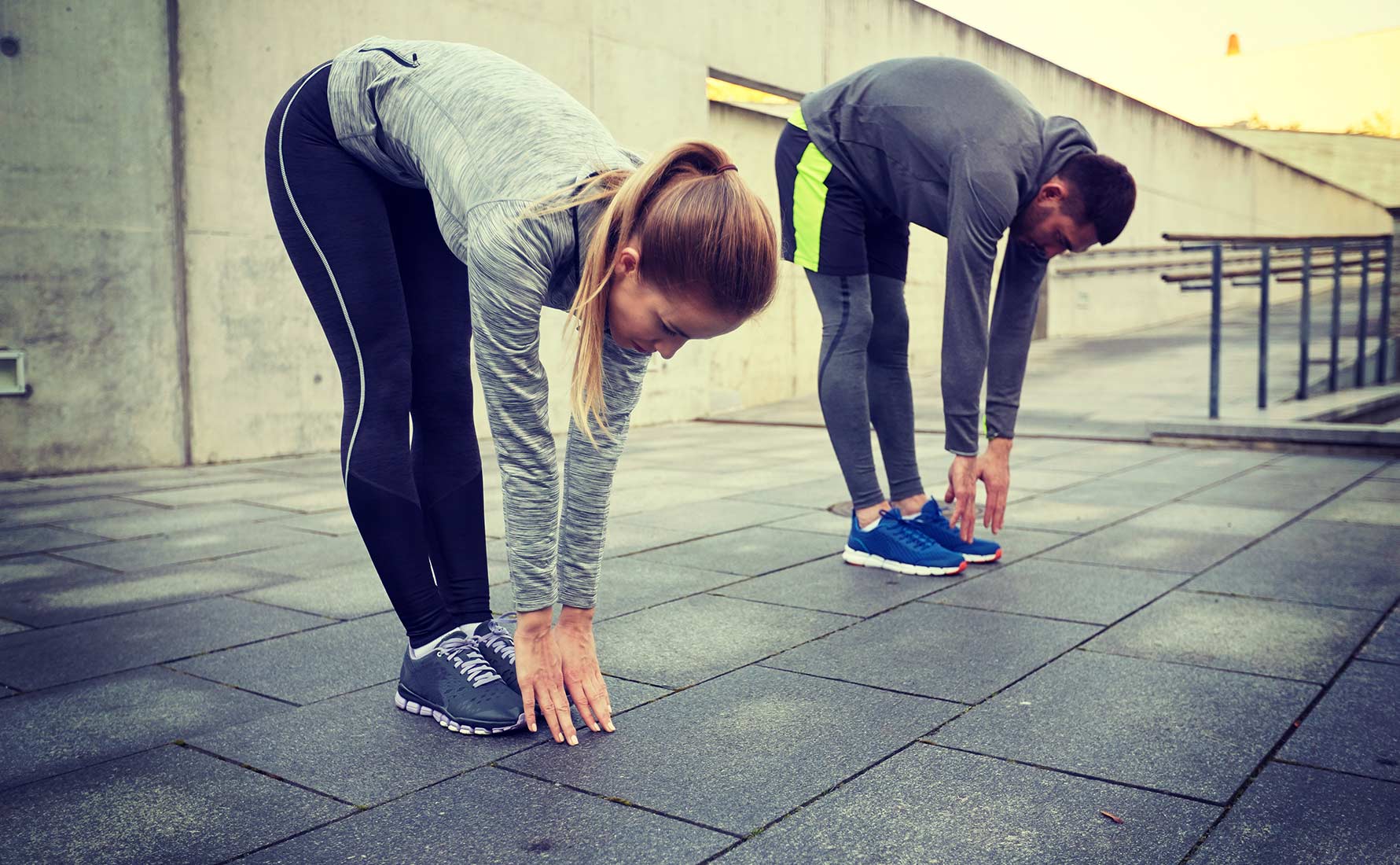There are several approaches to running warm-up. Someone spends less than 30 seconds on it or skips altogether, while someone performs a whole cycle of stretching exercises, which is also not beneficial. Meanwhile, proper warm-up before running is especially important during the cold season, when the risk of injury is especially high. We’ve put together some basic guidelines to help you prepare your body for workout.
Slow Jogging
Start with a step, then speed up and jog slowly. This quickly warms up your muscles and increases circulation. Many people mistakenly skip this step by starting a training right away.
5 minutes of slow jogging will warm up your muscles and prepare your respiratory and cardiovascular systems for stress. The lower the outside temperature, the longer the preliminary training should take. This is required so that the muscles have time to warm up and become more elastic.
Self-Massage if Needed
If you have any problem areas of the body (for example, discomfort in the lower back or calves), massage this area with vigorous and light movements, but avoid strong pressure. Your task is to warm up the muscles as much as possible to make them more elastic and relieve tension. In addition, if during self-massage you felt not just discomfort, but pain, then this is a reason to reduce the load or abandon it. In this case, there is a possibility of injury.
Dynamic Stretching before Running
There are two types of stretching: static (when you keep your muscles taut and stiff) and dynamic (when muscles are stretched with a set of specific movements). Before the start of the race, especially if it is a competition or workout that requires maximum effort, it is extremely important for the athlete to warm up very well those muscle groups that are used when running: hip flexor muscles, biceps femoris, quadriceps, calf muscles. Ideally, dynamic stretching before running should include:
Standing Forward Bend
Place your feet shoulder-width apart. Bend to each leg and to the center.

Hip Circles
Feet shoulder width apart. Hands on your hips. Make slow circular movements with your hips, trying to bend in the lower back as deep as possible.
Walking Lunges
Take a few wide steps. At each step, bend the front leg at the knee, and try to touch the ground with the knee of the back leg. Make sure that the knee of the front leg does not go beyond the toe.
Leg Swings
Standing on one leg, swing forward with the other leg. Then swing back. Add left and right side swings. Repeat with the other leg.
Stretching Feet
Stretch your feet, focusing on the outside and inside of the foot. Then make a rotational movement with the foot, bending the leg at the knee (the foot can touch the ground or be in the air).

Running Warm-Up Drills for Speed
Running drills are a set of exercises that are performed on a short distance and improve the running technique and speed of the athlete. In training, these exercises are performed on the warmed-up muscles (after dynamic stretching). At competitions, they are performed shortly before the start. This is usually 5-6 exercises with slow jogging between each set.
Butt Kicks Running Drill
Run 300-650 ft, sweeping your legs backwards and trying to touch your buttocks with your heel. Keep your back straight. Avoid leaning forward too much.
A-Skip Running Drill
Run lifting your hip as high as possible for each step. At the same time, the hands work like in a run. Make sure that your back remains straight and not leaning back.
Side Stepping Running Drill
Run sideways forward bringing your hind leg to your lead leg. Keep the rhythm of the movement. Then switch sides.
High Knees Running Drill
Make jumps on each step. Try to hang in the air, as it were, thanks to a powerful push with your feet.
Straight Leg Bounds Running Drill
Run without bending your knees. You should have straight legs and a firm foot. Landing on the forefoot followed by a quick take-off.
Conclusion
Avoid static stretching before workout. The main purpose of a running warm-up is to increase blood circulation and prepare the muscles for intensive work. The goal of static stretching is the opposite: to relax your muscles and prepare them for recovery. It is important to do a static warm-up after a workout.